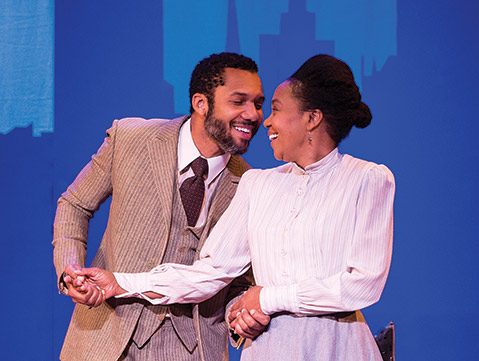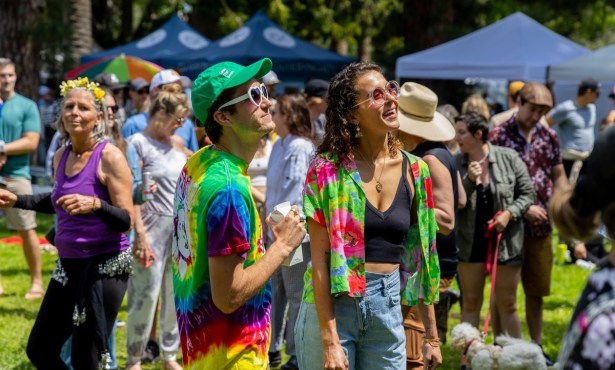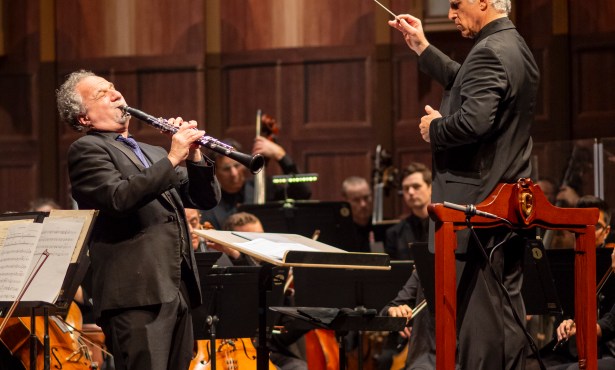Review: Intimate Apparel at the New Vic February 8
Ensemble Theatre Company Goes Back in Time for Lynn Nottage's Pla

On a rainy Sunday night in Santa Barbara, inside the New Vic, I had the pleasure of visiting New York City, circa 1905. Into this world came the characters in Pulitzer Prize–winner Lynn Nottage’s play Intimate Apparel, directed by Saundra McClain. The ensemble work of this six-member cast, consisting almost entirely of scenes between lead actress Karole Foreman and one other character, recalls a series of duets, each building and flowing into the next.
The action takes place in and on a magnificent set designed by JR Bruce. Its multiple levels and crowded, colorful spaces echo the closely packed tenements of early-1900s N.Y.C. A bright, crazy quilt on a bed provides both a visual and thematic centerpiece.
The production was relaxed and intimate, belying the crowded chaos that characterized the place and time it depicts. According to notes from dramaturge Anna Jensen provided in the program, by that time, New York City “had become the most densely populated city in the history of the world,” with some 1,000 human beings per acre — half of them immigrants — packed into the neighborhoods where Apparel’s action takes place: the Lower East Side, Fifth Avenue, and the Tenderloin. The play unfolds at a pleasing, un-21st-century pace, allowing the audience to sink deeply into its characters and relationships.
I enjoyed the company of Esther, a shy, kind, illiterate 35-year-old African-American seamstress who crafts beautiful lingerie for clients rich (Mrs. Van Buren, a white woman who lives on Fifth Avenue) and poor (Mayme, an African-American prostitute). I watched Esther begin a long-distance epistolary romance with George, a Barbadian immigrant. As I got to know Mr. Marks, the fabric salesman and Orthodox Jewish immigrant who clearly harbors a serious crush on Esther, I was reminded of all the ways in which religion, culture, and color can create seemingly impenetrable barriers between people, and how, through it all, the delicate but powerful thing that is desire stays alive, despite all the obstacles that would stand in its way. When Esther’s seemingly final chance at love turned out to be far less idyllic than she’d hoped, the crash happened not at breakneck speed but in a finely paced unraveling.
In those days, the rules about whom one could befriend, love, or marry were largely unspoken but very clear to all. Today, those not-so-ancient social mores and boundaries appear to be dissolving, but this play helps us remember how recently things were very different and how easily we can be divided against one another, and even against ourselves.
Some of the most poetic writing in Nottage’s play spills forth during George’s monologues describing his time helping to dig the Panama Canal. His story helped me remember the many millions of human beings who have been regarded as (George’s term) “chattel” over the centuries — their lives regarded as worthless — and it helped me remember that this is still true in many parts of the world. The troubling truth is that even today, not all lives are considered to be equally valuable.
As a relatively privileged white woman living in the 21st century and a member of what might be the first generation of women who don’t experience mandated barriers to professional or personal freedom because of their gender, I appreciated being reminded of the challenges my grandmother and her mother probably faced just because they were born female. I appreciated having been able to fall in love with whomever I chose: No barrier has ever been thrust in my way in that regard — not race nor religion, aside from the occasional sigh from a parent or grandparent about my refusal to even try to find myself a nice Jewish boy.



